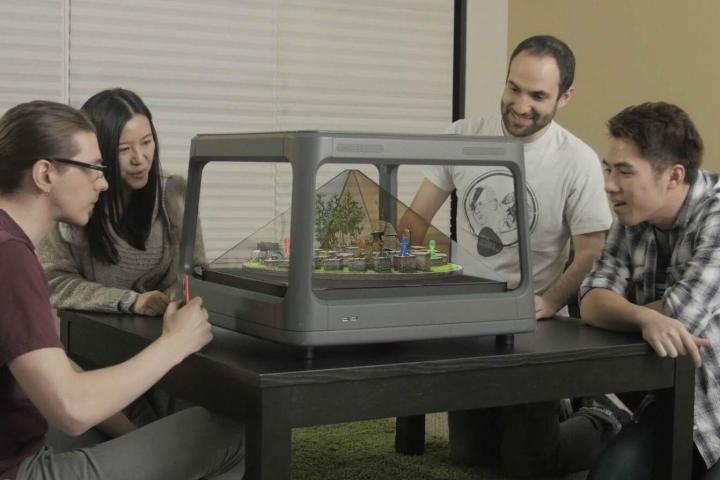
Canadian startup H+Technology wants to change that. The company has developed a unique holographic display that might finally bring holograms into your home. The Holus, as it’s called, is a tabletop holographic platform that takes any digital content — be it from a computer, tablet, or smartphone — and converts it into a three dimensional hologram.
Inside the microwave-sized device there’s a coated plexiglass prism. A projector underneath Holus’ lid beams four images of the same object onto the walls of this prism, and thanks to the magic of holography, there appears within the prism a single image to any user looking at it — no matter what side they’re viewing from. Users can control the images with any tablet, smartphone, or computer — so long as the device sports Bluetooth or Wi-Fi.
Holus only exists in prototype form at this point, but if or when it hits the market, it’ll come in two different versions: Pro and Home. The Pro version will be slightly larger, but the main difference is that it’ll come with an SDK license to develop apps for the device. H+ has developed an SDK that supports game engines like Unity3D and Unreal, as well as partner plugins for various input devices.
The device has popped up at various trade shows and conventions over the past few months, and now the company indicates that it is finally ready to bring Holus into the world. To raise money for production, H+Technology has recently launched a Kickstarter campaign — which actually surpassed its ~$40,000 funding goal in less than 18 hours. At time of writing the project is sitting on over $100K in pledges, and still has nearly a month left in the campaign.
If you pledge your support now during the early stages, you can get your hands on a Holus for a pledge of about $850. Barring any major hiccups in the manufacturing process, H+Technology expects to start shipping the device about a year from now in July 2016.
Editors' Recommendations
- Nvidia turns simple text prompts into game-ready 3D models
- 3D printed cheesecake? Inside the culinary quest to make a Star Trek food replicator
- AMD is ready to battle Intel with next-gen 3D V-Cache CPUs
- iOS 16 is a perfect excuse to bring 3D Touch back to iPhones
- New 3D smartphone technology could change photography, experts say




